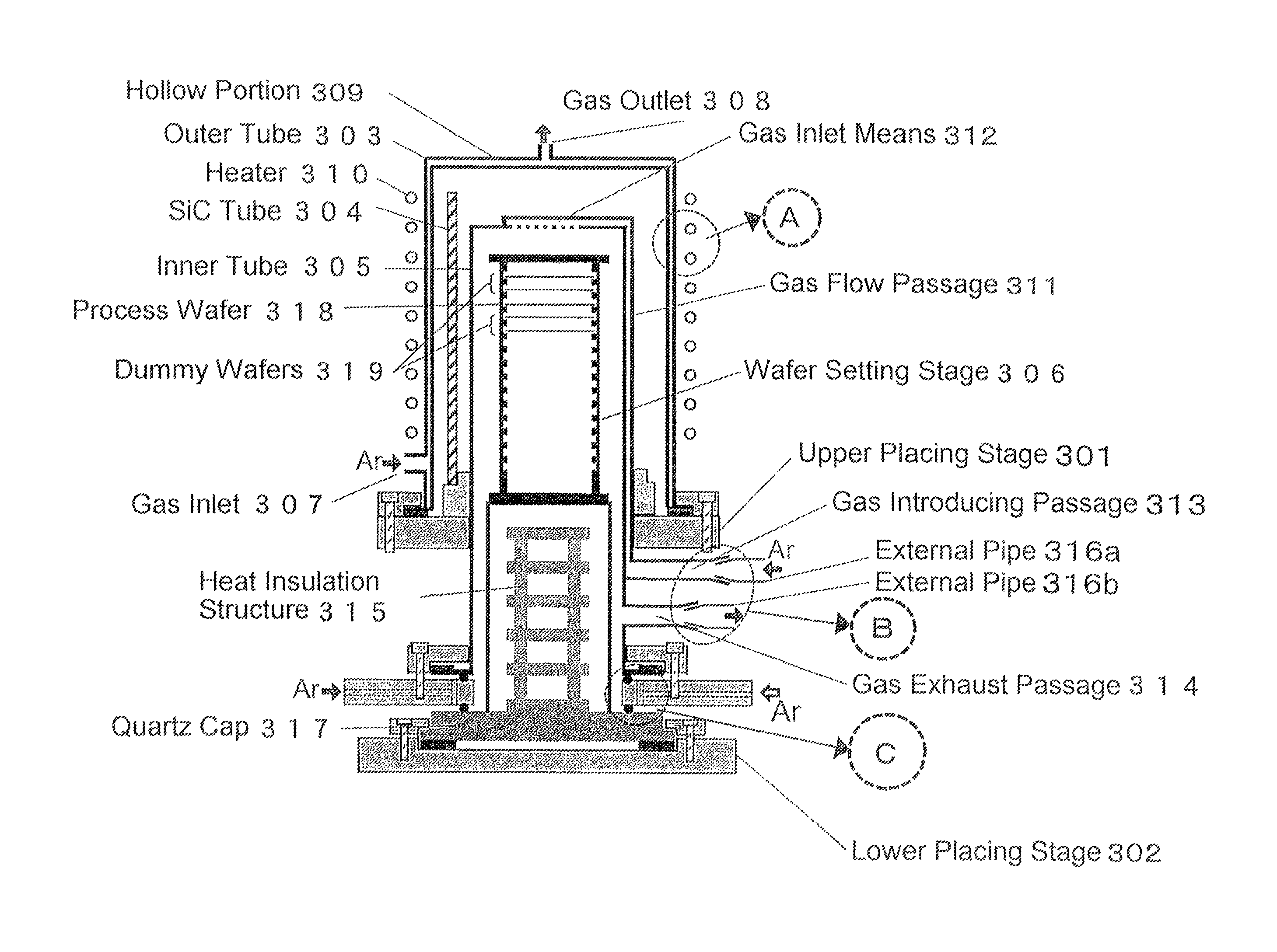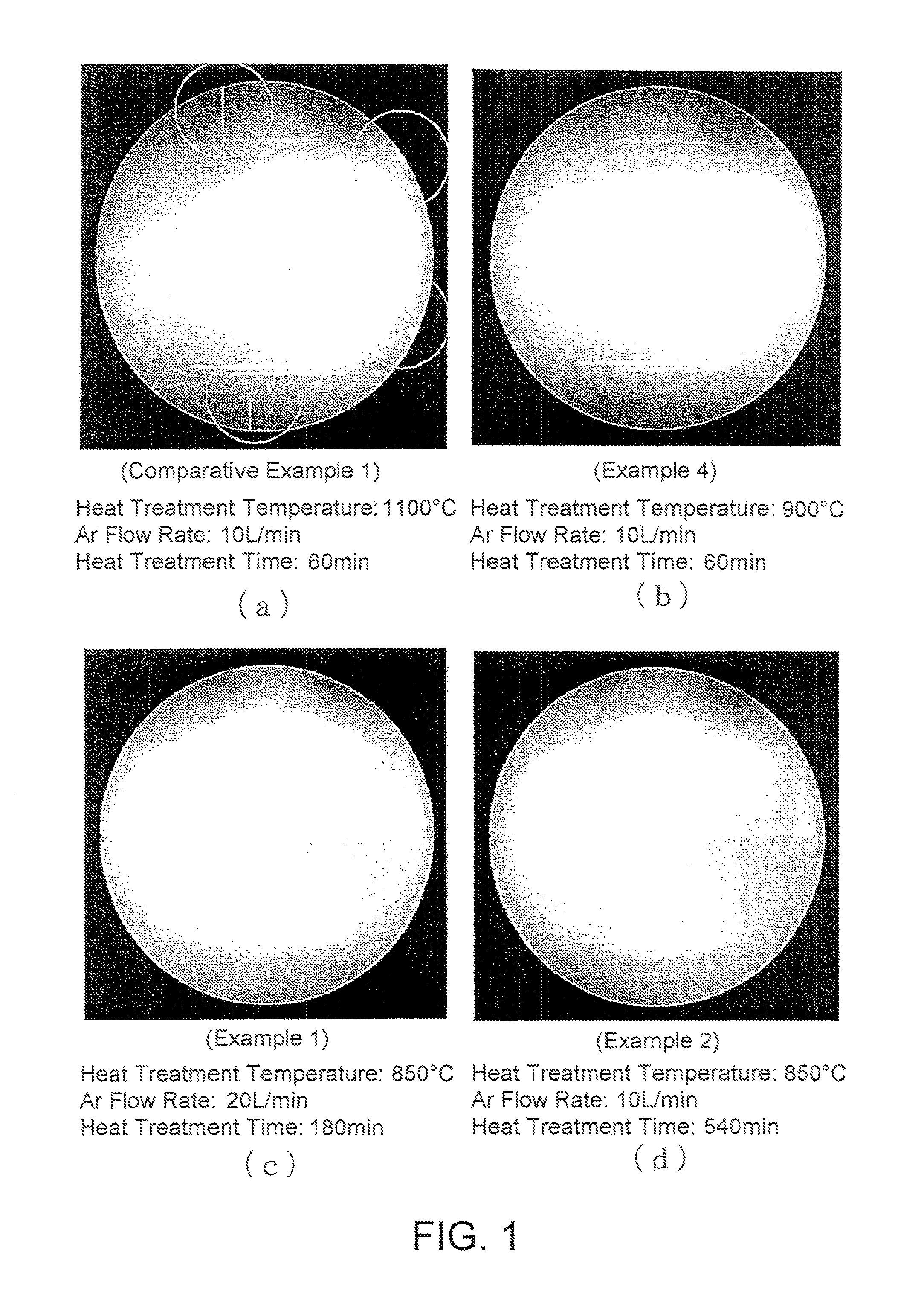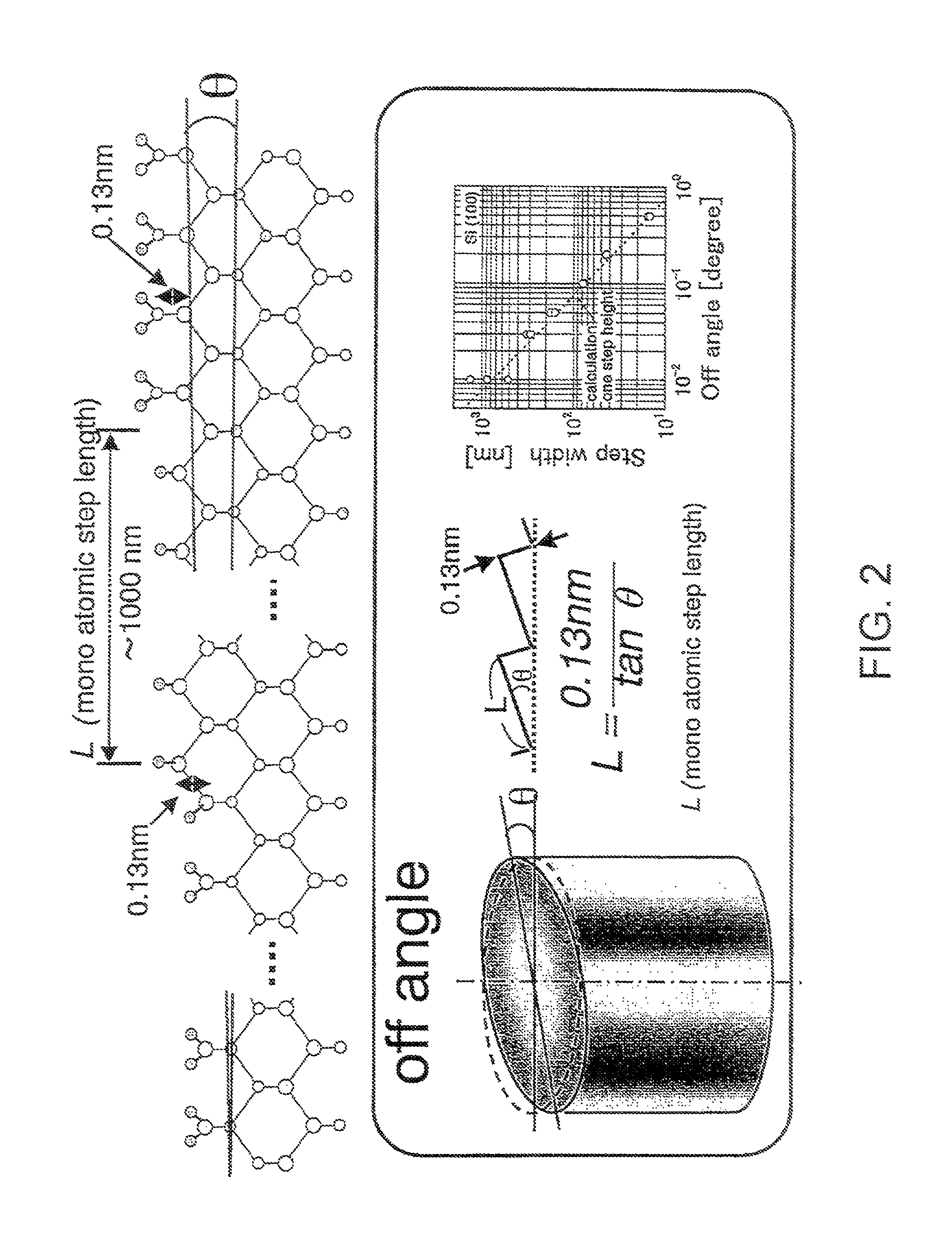Surface treatment method for atomically flattening a silicon wafer and heat treatment apparatus
a technology of surface treatment and silicon wafer, which is applied in lighting and heating apparatus, drying machines with progressive movements, furnaces, etc., can solve the problems of not being disclosed in the patent document 1 and achieve the effects of low cost, no slip line, and reduced gas us
- Summary
- Abstract
- Description
- Claims
- Application Information
AI Technical Summary
Benefits of technology
Problems solved by technology
Method used
Image
Examples
example 1
[0095]First, a silicon wafer which had a diameter of 200 mmφ and which had a surface of (100) orientation was prepared and the silicon wafer surface was cleaned in the following sequence.
[0096]First, the silicon wafer surface was cleaned with O3 water for 10 minutes, cleaned with dilute HF (0.5 wt %) for 1 minute, and finally rinsed with ultrapure water for 3 minutes.
[0097]Then, the silicon wafer was placed in a heat treatment apparatus shown in FIG. 3. While Ar which included 0.2 ppb or less of moisture and 0.1 ppb or less of O2 was caused to flow at a flow rate of 20 L / min, a heat treatment was carried out under conditions of a heat treatment temperature of 850° C. and a heat treatment time of 180 minutes.
[0098]It is to be noted that the heat treatment was not carried out in the manner described above with reference to FIGS. 4, 5, and 6, but was carried out under heat treatment apparatus conditions equivalent to those of a heat treatment apparatus shown in FIG. 9 of the above-ment...
example 2
[0100]A sample was prepared under the same conditions as in Example 1 except that the Ar flow rate was set to 10 L / min and the heat treatment time (holding time) to 540 minutes.
example 3
[0101]A sample was prepared under the same conditions as in Example 1 except that the Ar flow rate was set to 10 L / min and the heat treatment time (holding time) to 270 minutes.
PUM
 Login to View More
Login to View More Abstract
Description
Claims
Application Information
 Login to View More
Login to View More - R&D
- Intellectual Property
- Life Sciences
- Materials
- Tech Scout
- Unparalleled Data Quality
- Higher Quality Content
- 60% Fewer Hallucinations
Browse by: Latest US Patents, China's latest patents, Technical Efficacy Thesaurus, Application Domain, Technology Topic, Popular Technical Reports.
© 2025 PatSnap. All rights reserved.Legal|Privacy policy|Modern Slavery Act Transparency Statement|Sitemap|About US| Contact US: help@patsnap.com



